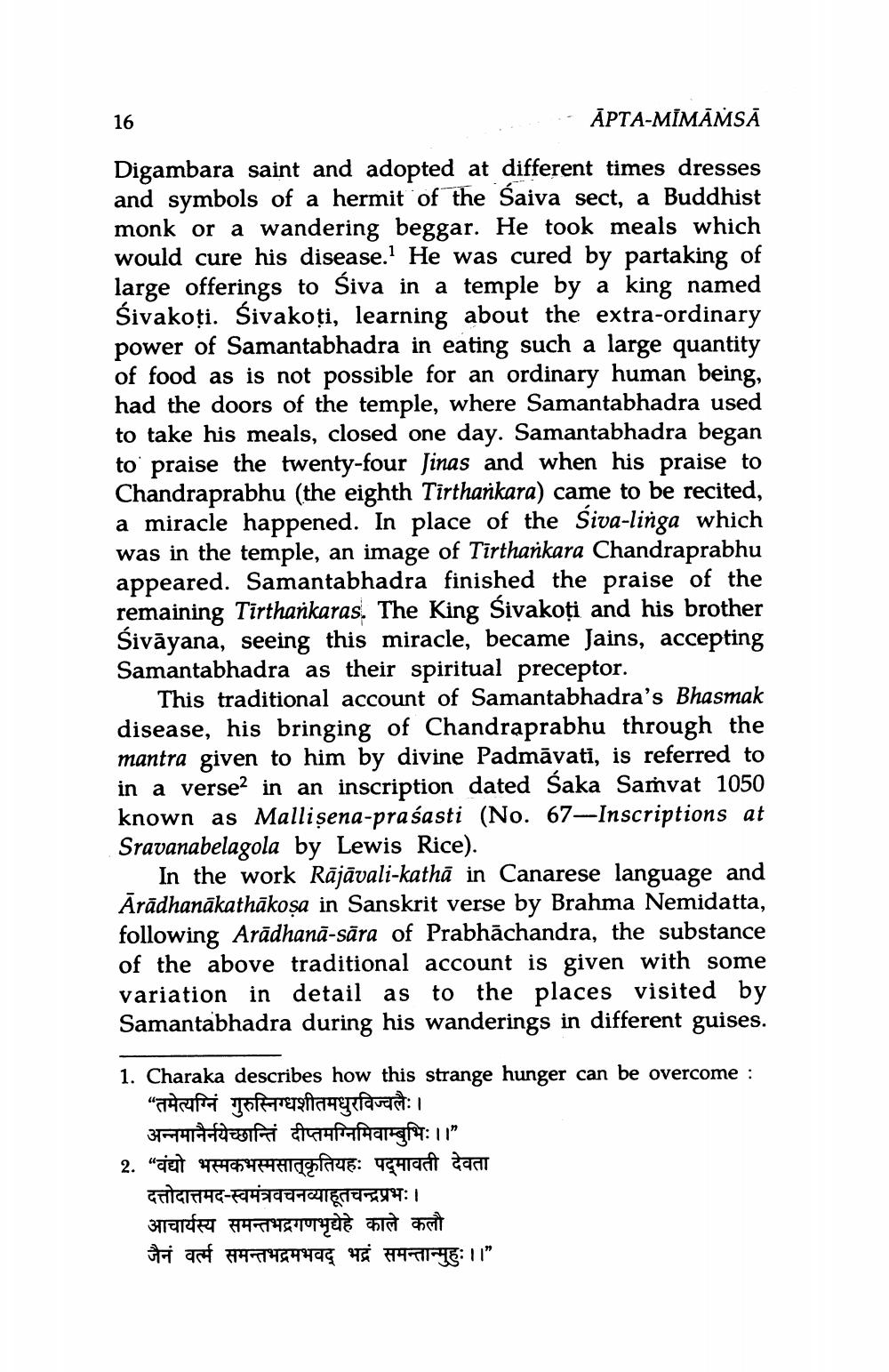________________
16
ĀPTA-MĪMĀMSĀ
Digambara saint and adopted at different times dresses and symbols of a hermit of the Saiva sect, a Buddhist monk or a wandering beggar. He took meals which would cure his disease.1 He was cured by partaking of large offerings to Śiva in a temple by a king named Śivakoti. Śivakoti, learning about the extra-ordinary power of Samantabhadra in eating such a large quantity of food as is not possible for an ordinary human being, had the doors of the temple, where Samantabhadra used to take his meals, closed one day. Samantabhadra began to praise the twenty-four Jinas and when his praise to Chandraprabhu (the eighth Tirthankara) came to be recited, a miracle happened. In place of the Siva-linga which was in the temple, an image of Tirthankara Chandraprabhu appeared. Samantabhadra finished the praise of the remaining Tirthankaras. The King Śivakoti and his brother Śivayana, seeing this miracle, became Jains, accepting Samantabhadra as their spiritual preceptor.
This traditional account of Samantabhadra's Bhasmak disease, his bringing of Chandraprabhu through the mantra given to him by divine Padmavati, is referred to in a verse2 in an inscription dated Śaka Samvat 1050 known as Mallisena-prasasti (No. 67-Inscriptions at Sravanabelagola by Lewis Rice).
In the work Rājāvali-kathā in Canarese language and Ārādhanākathākoṣa in Sanskrit verse by Brahma Nemidatta, following Aradhana-sära of Prabhachandra, the substance of the above traditional account is given with some variation in detail as to the places visited by Samantabhadra during his wanderings in different guises.
1. Charaka describes how this strange hunger can be overcome : “तमेत्यग्निं गुरुस्निग्धशीतमधुरविज्वलैः ।
अन्नमानैर्नयेच्छान्तिं दीप्तमग्निमिवाम्बुभिः ।।”
2. “वंद्यो भस्मकभस्मसात्कृतियहः पद्मावती देवता
दत्तोदात्तमद-स्वमंत्रवचनव्याहूतचन्द्रप्रभः ।
आचार्यस्य समन्तभद्रगणभृद्ये काले कलौ
जैनं वर्त्म समन्तभद्रमभवद् भद्रं समन्तान्मुहुः । ।”




